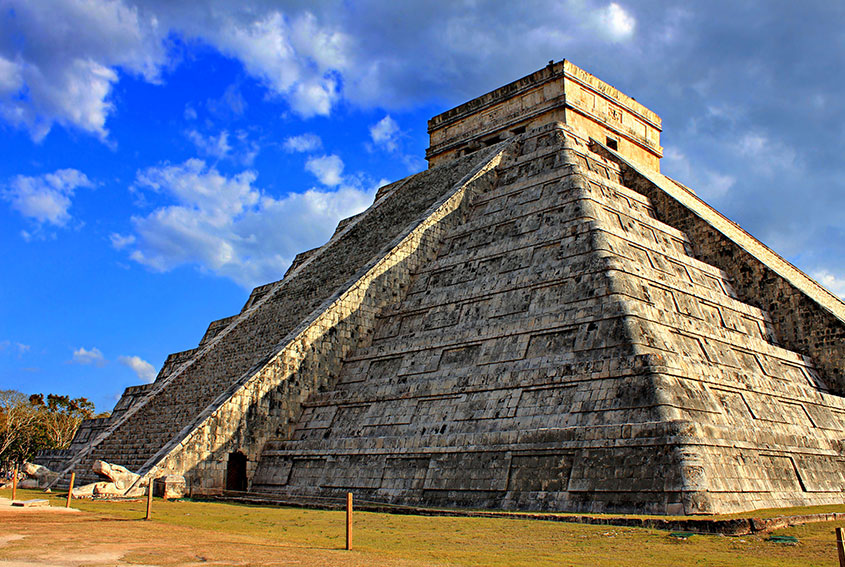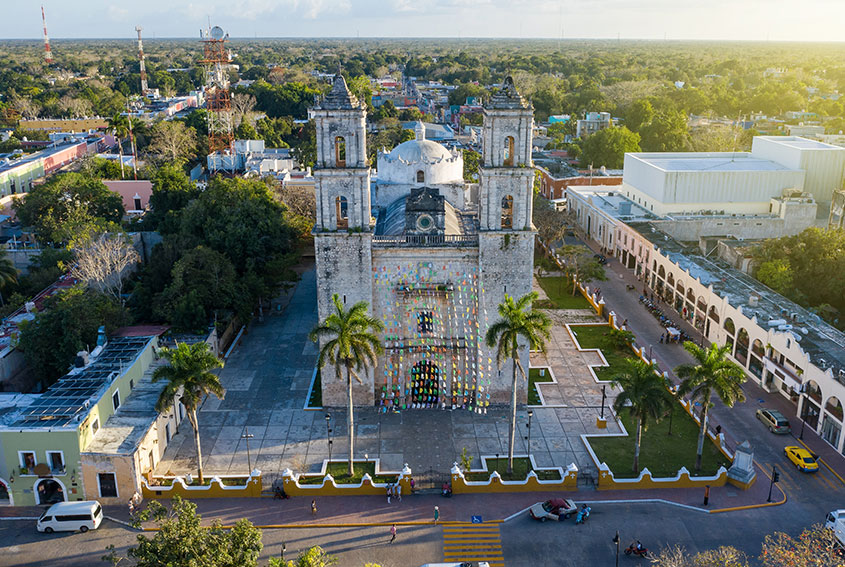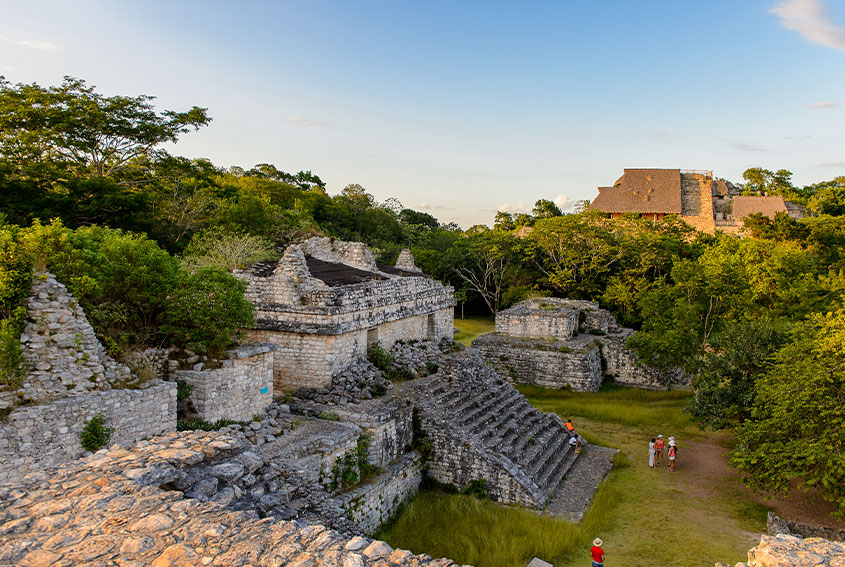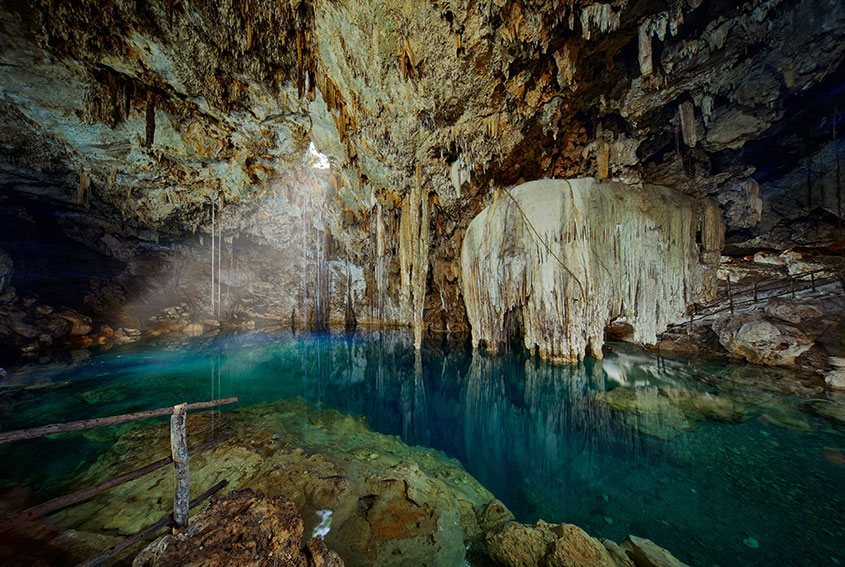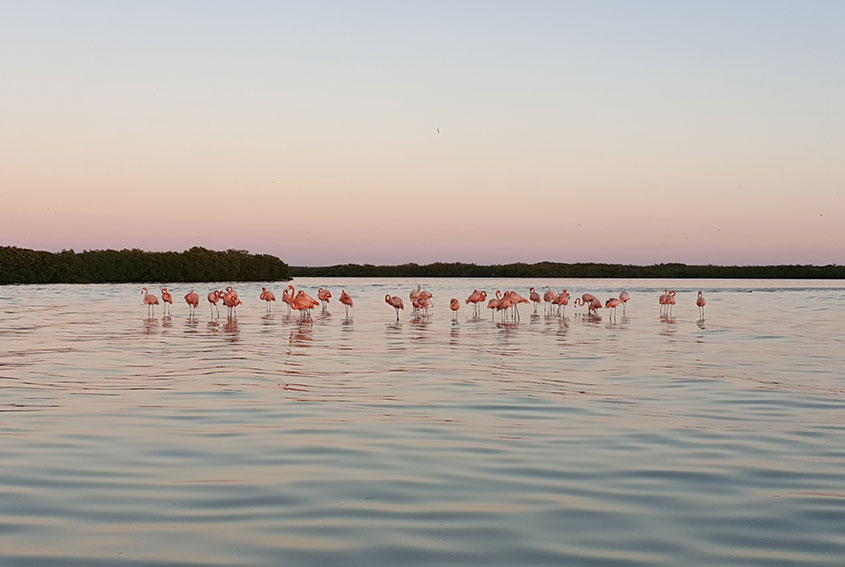Witness the Equinox at Chichen Itza & Explore Eastern Yucatan
An unforgettable travel experience to enjoy during your Mexican Caribbean March vacation is a visit to the ancient Maya metropolis of Chichen Itza to witness the Equinox light and shadow spectacle. As the sun sets on March 20 and the shadows fall across the El Castillo Pyramid that dominates the sacred heart of Chichen Itza, the mysterious shape of a huge snake appears. This is the symbol of Kukulcan, the feathered serpent god, returning to earth to give hope to his followers, an awe-inspiring sight that will leave you wondering, how on earth did they do that? Yet there’s much more to see, why not make a day of it and explore the eastern Yucatan at your own pace before you go to Chichen Itza in the afternoon?
Sunset and shadow serpents at Chichen Itza
The ancient temple builders aligned the El Castillo pyramid, also known as the Pyramid of Kukulcan, so precisely to catch the rays of the westering sun on the days of the spring and fall equinoxes in March and September. Triangles of light and shadow form along the side of the north staircase creating the rippling shape of a snake, which merges with a carved serpentine head at the foot of the building. The illusion is created of a gigantic reptile slithering down from the heavens and across the ground towards the Sacred Cenote. This was a sign for the Maya, heralding the spring planting season and the September harvest.
The spring equinox falls on March 20 in 2023, and the light and shadow snake is also visible the day before and after the equinox, cloud cover permitting. If you plan your trip to witness the Equinox phenomena, it will add even more magic to your visit, but of course, there’s much more to see than the pyramid. As you explore this huge site, which is still being excavated, you’ll see why it is a UNESCO World Heritage Site.
Colonial charm of Valladolid
Start your tour in the colonial city of Valladolid. This peaceful pueblo magico is full of history and traditions. Stroll around the main square to the 17th-century San Servacio Cathedral and along Calzada de Los Frailes, the street leading to San Bernardino Church and Sisal Convent. You’ll pass restored casonas or mansions, some of which have been converted into boutique hotels, restaurants, a variety of craft shops and galleries. There’s a workshop where cacao is transformed into chocolate using traditional techniques and even a perfumery. Be sure to call in at La Casona restaurant to see the Shrine to the Virgin of the Candelaria made by artisans from Xcaret Park. Using fragments of colorful Mexican pottery and stone, they created an impressive altar for the statue of the Virgin and a fountain.
If you are interested in Mexican handicrafts, take the 10 a.m. guided tour of Casa de Los Venados, a 17th-century restored mansion just off the main square. Each room of this private home is full of exquisite ceramics, carvings, textiles and paintings from the owners’ collection of more than 3,000 pieces of Mexican folk art.
For more Mexican color, MUREM, the Mexican Ethnic Clothing Museum on Calle 49 in front of San Juan Park offers a glimpse of the world of traditional Mexican garments worn in different parts of the country. Embroidered designs full of symbolism celebrating nature and ancient beliefs, huipiles worn in daily life and for festivals, ceremonial wooden masks and more are on displays and guides are on hand to tell you the stories of each garment.
Ek Balam, the place of the black star jaguar
As an alternative, you could visit two ancient Maya cities in one day, Ek Balam in the morning and Chichen Itza in the afternoon, staying on for the evening video mapping show. Located 20 minutes to the north of Valladolid, Ek Balam (“black star jaguar in Maya”) was inhabited from 600 B.C. and reached its peak between AD 600 and 900. During this time, it forged political and trade links with other city states in the Maya World, including Chichen Itza, and the mix of architectural and artistic styles on display at the site reflects its regional influence.
To date archaeologists have found five sacbes or ceremonial causeways, three defensive walls, a ball court, chultunes or Mayan wells, several stelae (carved standing stones) and over 60 structures ranging from temples and palaces to tiny shrines in an area of 12 square kilometers. Other important discoveries include a royal tomb, the city’s emblem glyph and the name of the founding father of a powerful dynasty. Ukit Kan Le’k Tok came to power in 770 A.D. and ushered in an extraordinary building and artistic boom.
The highlight at Ek Balam is undoubtedly the 31-meter-high Acropolis with its magnificent stucco façade featuring statues of long-lost rulers, hieroglyphic inscriptions, murals and masks in the form of the gaping jaws of the earth monster.
On the Cenote trail
After a morning exploring Valladolid or Ek Balam, a dip in the cold, clear waters of a cenote or sinkhole is a great way to cool off. Start with Zaci Cenote in Valladolid and then see more cenotes in the surrounding area including Dzitnup or Xkeken, the Yucatan’s most famous sinkhole, Samula, Cenote Oxman in Hacienda San Lorenzo Oxman, Suytun, Hubiku in Temozon and Ik-Kil near Chichen Itza.
Heading towards the Gulf coast
If you really want an early start, combine nature with your Chichen Itza outing by visiting Rio Lagartos on the Gulf coast for the sunrise. This wetland reserve is rich in wildlife and is famous for the flamingos that gather in the shallow lagoons and salt marshes to feed and breed. Fishermen from the waterfront village of Rio Lagartos offer boat trips along the ria or estuary and through the mangroves.
Keep a lookout for crocodiles or lagartos that give the reserve its name. You are likely to spot more birds at dawn. Lone ospreys hunt for fish; flocks of white pelicans and skimmers gather in the lagoons and kingfishers perch on branches. You’ll spot ibis, roseate spoonbills, and there are 16 species of heron and egret in the reserve, including the stately great egret, the snowy egret, green heron, tricolored heron and little blue heron. Make sure you have your camera or mobile at the ready for photos!
You’ll notice that Yucatan flamingos are a much brighter shade of pink than other species of flamingos you might have seen. Their dazzling salmon pink plumage is due to a diet of minute brine shrimps and crustaceans found only in the area´s coastal lagoons.
Your Concierge can help you arrange trips to Chichen Itza and the eastern Yucatan.

